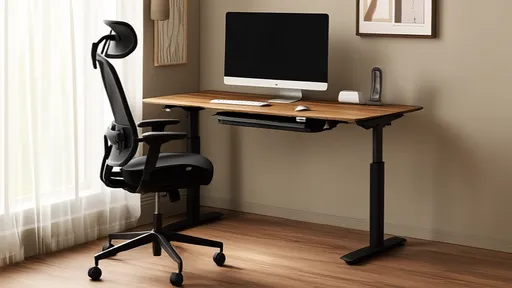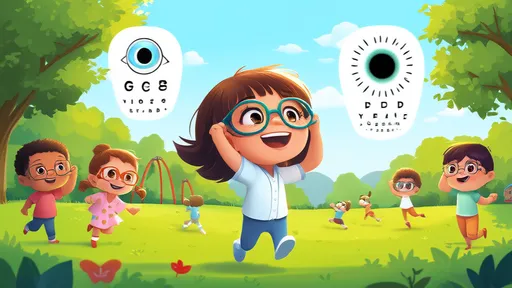The alarming surge in childhood myopia has become a pressing public health concern worldwide. In recent years, eye care professionals and researchers have observed a dramatic increase in nearsightedness among children, with some regions reporting prevalence rates as high as 80% among urban youth. This troubling trend has prompted experts to reevaluate modern lifestyles and propose concrete solutions to protect young vision.
Dr. Lisa O'Malley, a pediatric ophthalmologist at Boston Children's Hospital, explains that the human eye evolved for outdoor environments, not for prolonged close-up work in artificial lighting. "We're seeing children as young as six or seven developing myopia at rates we previously only observed in teenagers," she notes. "The eye adapts to what we demand of it, and right now we're demanding too much near vision without the balancing effects of distance viewing in natural light."
The scientific community has reached consensus that daily outdoor activity serves as a powerful protective factor against myopia progression. Sunlight exposure appears to stimulate dopamine release in the retina, which may help regulate normal eye growth. Furthermore, the visual richness of outdoor environments - with their varying distances, textures, and depth cues - provides essential stimulation for proper visual development that tablet screens and classroom walls simply cannot replicate.
Urbanization and digital lifestyles have created what researchers call a "perfect storm" for myopia development. Children today spend significantly more time engaged in near work (reading, screen time) and significantly less time outdoors than previous generations. In many Asian countries where academic pressure is particularly intense, some first-graders already spend over three hours daily on homework after school, leaving little time for outdoor play.
The two-hour outdoor recommendation emerges from multiple longitudinal studies showing measurable differences in myopia progression between children who spend time outdoors and those who don't. Notably, the protective effect appears dose-dependent - meaning more outdoor time generally correlates with greater protection. However, researchers identified two hours as the threshold where benefits become statistically significant across populations.
Implementing this recommendation faces practical challenges in modern societies. Many schools have reduced recess time to accommodate academic demands, and safety concerns limit unsupervised outdoor play. Dr. O'Malley suggests creative solutions: "This doesn't have to be two continuous hours. Walking to school, having lunch outside, after-school sports - it all adds up. The key is making outdoor time a consistent daily priority, not just a weekend activity."
Parents often express surprise that outdoor time benefits eyesight regardless of physical activity level. "We're not necessarily talking about organized sports," clarifies Dr. Raymond Chen, a myopia researcher in Singapore. "A child reading under a tree gets similar protective benefits to one playing soccer. The crucial factors are natural light exposure and the opportunity for the eyes to focus at varying distances throughout the activity."
Schools pioneering outdoor classroom initiatives report unexpected benefits beyond vision protection. Teachers observe improved concentration, better mood regulation, and enhanced creativity in students who regularly learn outside. Some progressive districts have begun installing outdoor learning areas with weather protection to facilitate year-round use.
The economic implications of the myopia epidemic are staggering. By 2050, researchers project that half the world's population will be myopic, with associated costs of vision correction and potential lost productivity reaching into the trillions. Preventive measures like outdoor time could substantially reduce this burden. Vision scientists emphasize that while glasses and contacts correct blurry vision, they don't address the underlying elongation of the eye that characterizes progressive myopia.
Cultural attitudes toward outdoor time vary significantly worldwide. In Australia, where outdoor lifestyles remain prevalent, childhood myopia rates hover around 15% - dramatically lower than in many East Asian countries. Scandinavian countries, with their tradition of "there's no bad weather, only bad clothing," also report relatively low myopia prevalence despite limited daylight in winter months.
Technology companies have begun responding to the crisis. Several major device manufacturers now include "outdoor time" tracking in their health apps, while some children's educational apps lock after two hours of use with reminders to go outside. These developments reflect growing awareness that digital solutions alone can't solve problems created by digital overuse.
Public health campaigns promoting outdoor time face unique challenges in different climates. In extremely hot or cold regions, experts recommend adjusting outdoor schedules to milder times of day rather than abandoning the recommendation. "Even winter sunlight provides benefits," notes Dr. Chen. "Bundle up and get out there - the eyes don't care about the temperature."
As research continues, scientists are exploring whether specific wavelengths of sunlight offer particular benefits, which could lead to optimized artificial lighting solutions for indoor spaces. However, most agree that nothing truly replicates the full spectrum and intensity of natural light. The two-hour recommendation stands as the simplest, most accessible intervention available to families worldwide.
The childhood myopia epidemic represents a profound mismatch between our biological inheritance and modern environments. While corrective lenses and medical interventions will always have their place, the growing scientific consensus suggests that a return to fundamental human experiences - time outdoors in natural light - may offer the most sustainable solution to preserving children's vision for generations to come.

By /Jul 25, 2025

By /Jul 25, 2025

By /Jul 25, 2025

By /Jul 25, 2025

By /Jul 25, 2025

By /Jul 25, 2025

By /Jul 25, 2025

By /Jul 25, 2025

By /Jul 25, 2025

By /Jul 25, 2025

By /Jul 25, 2025

By /Jul 25, 2025

By /Jul 25, 2025

By /Jul 25, 2025

By /Jul 25, 2025

By /Jul 25, 2025

By /Jul 25, 2025

By /Jul 25, 2025